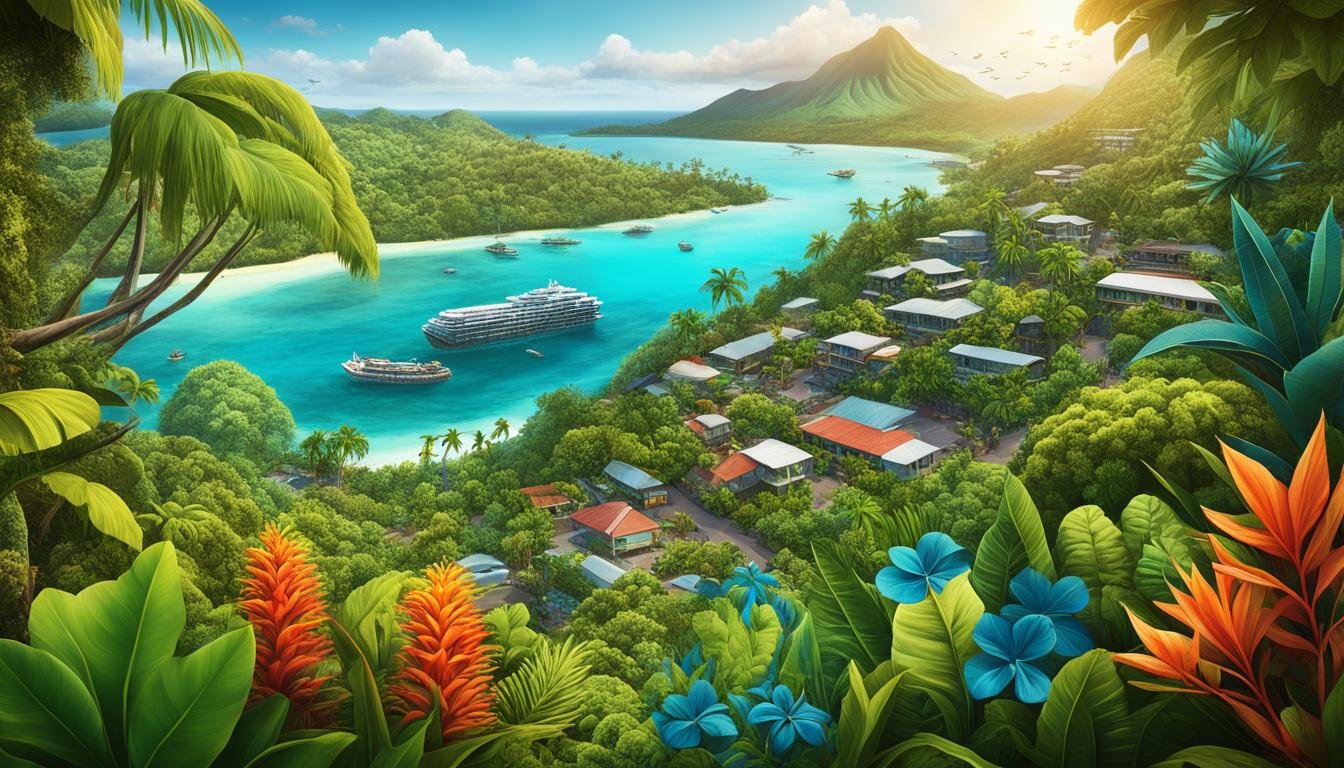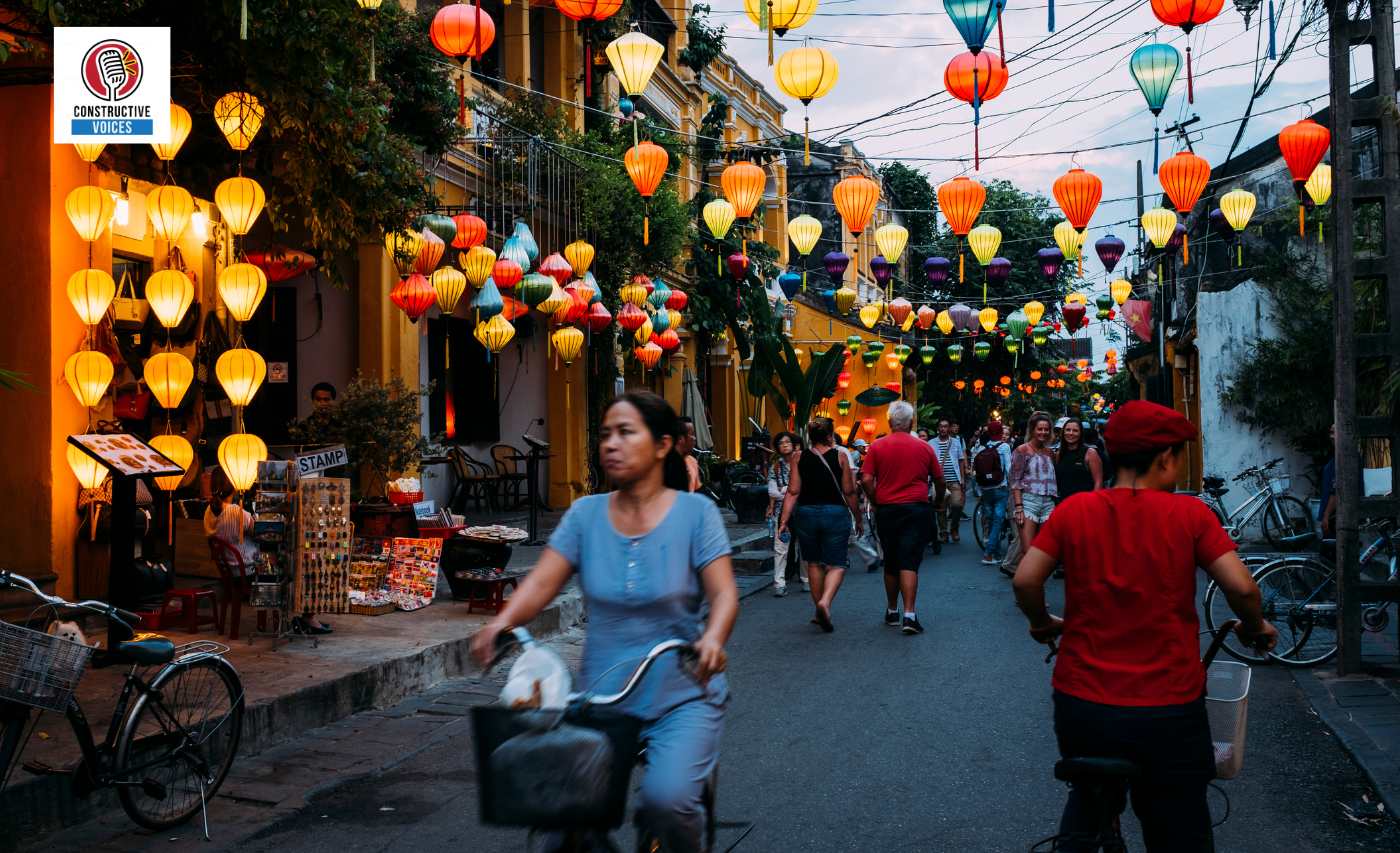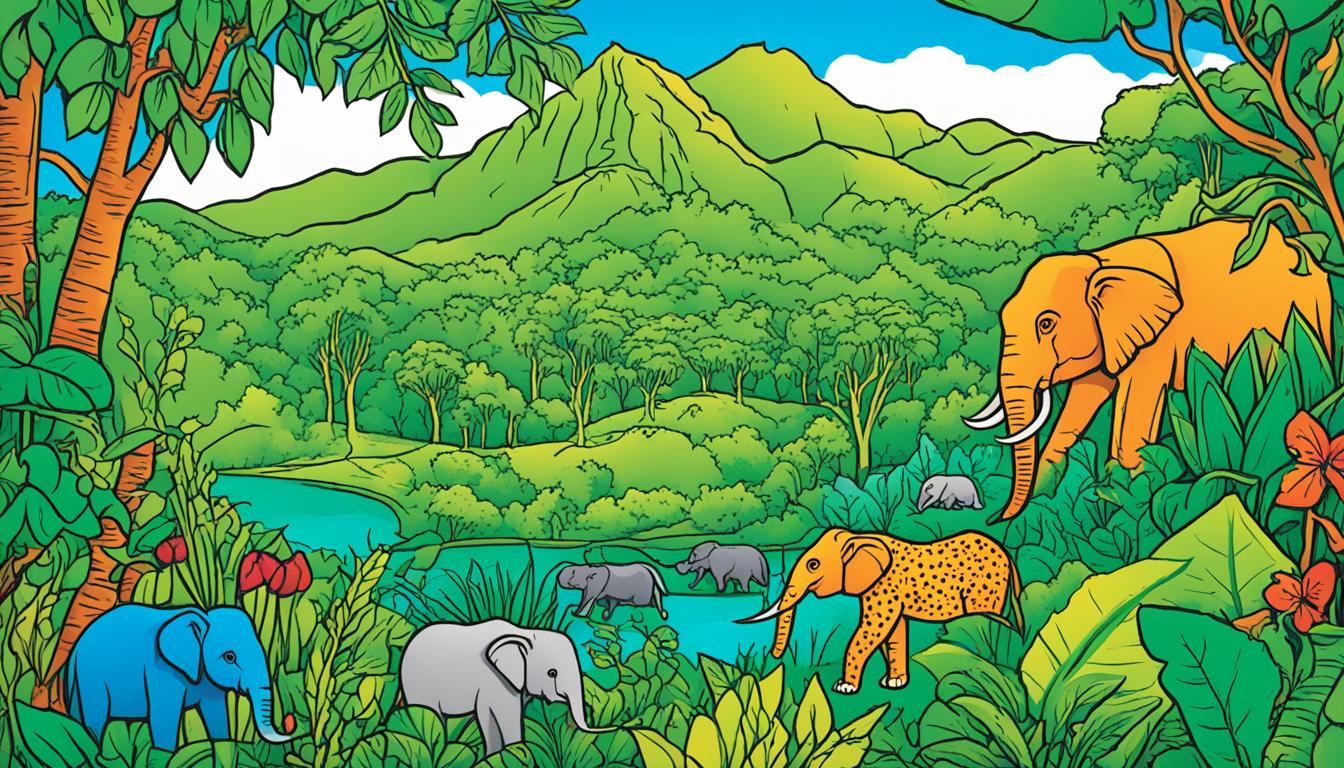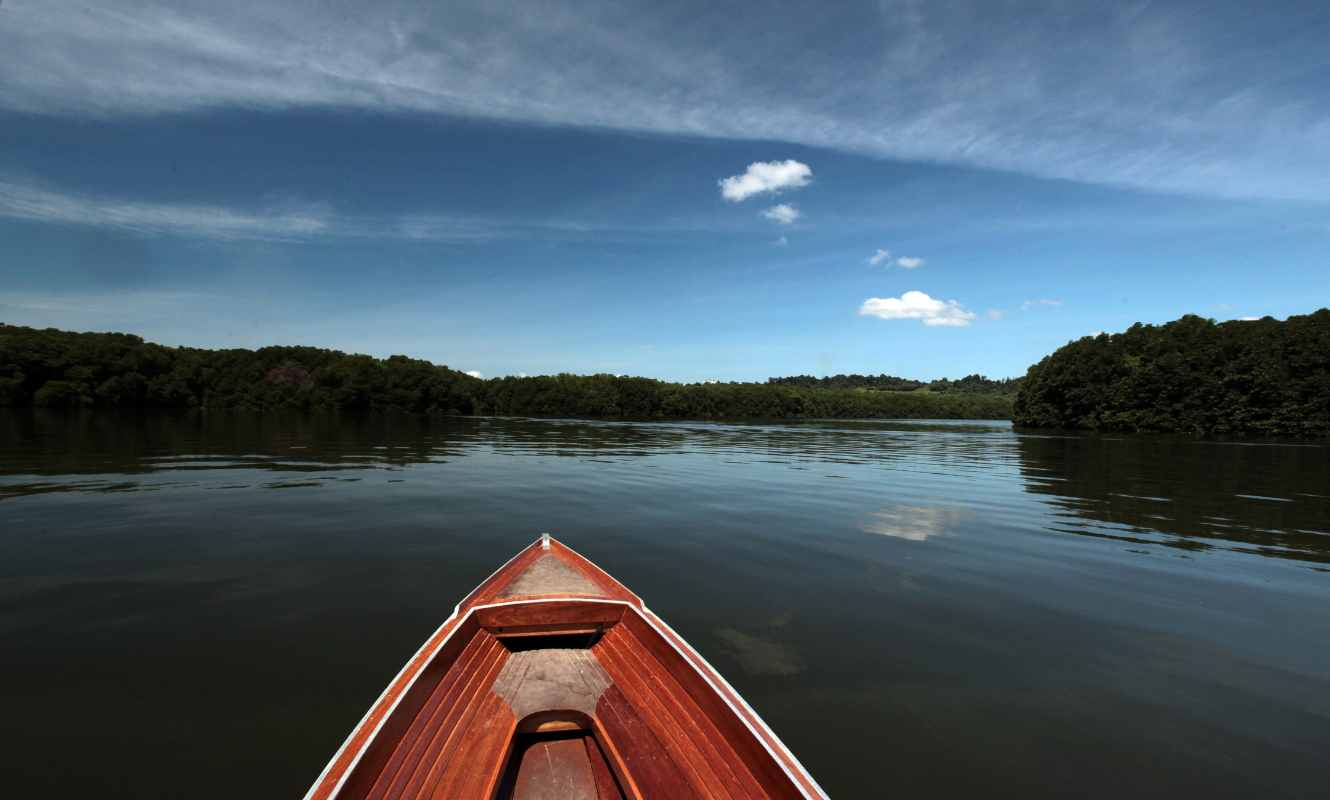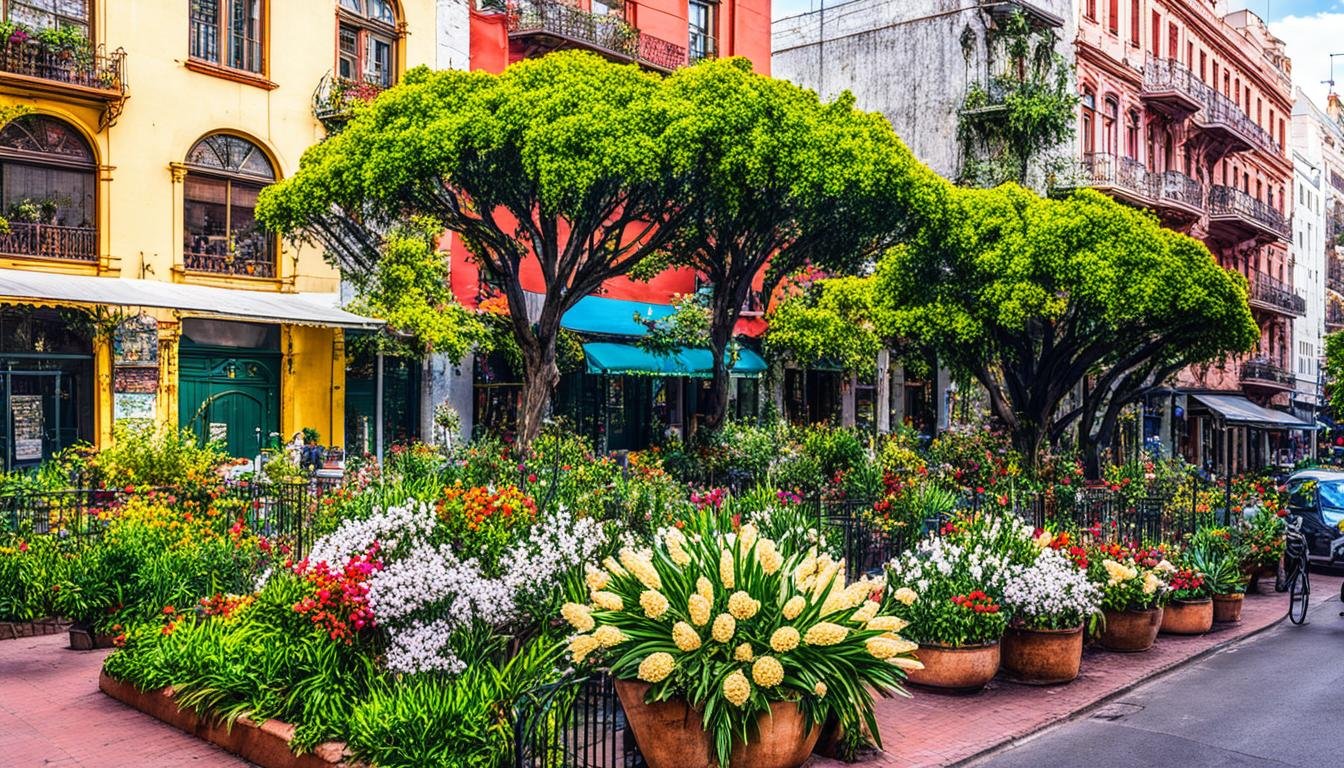Venezuela Biodiversity and the Built Environment
Venezuela is a country known for its remarkable biodiversity and commitment to environmental conservation. The intersection between the built environment and biodiversity preservation is crucial in ensuring a sustainable future for the nation. By adopting eco-friendly architecture, green infrastructure, and sustainable urban planning, Venezuela strives to protect its natural habitats and wildlife while promoting sustainable development.
Key Takeaways:
- Venezuela is a biodiversity hotspot with over 16,000 known plant species and a diverse range of wildlife.
- Conservation efforts are essential to protect Venezuela’s ecosystems and unique species from threats such as illegal mining and climate change.
- The country’s rich plant life sustains local livelihoods and contributes to maintaining ecosystems.
- Venezuela is home to a diverse array of wildlife, including fish, birds, mammals, reptiles, and amphibians.
- Threats to Venezuelan biodiversity include deforestation, habitat loss, climate change, illegal mining, and pollution.
The Rich Plant Life of Venezuela
Venezuela is renowned for its vast and diverse plant life, encompassing over 16,000 recorded plant species. This South American country boasts a rich botanical heritage that includes a variety of tropical trees, shrubs, flowering plants, and crops.
Among the tropical trees found in Venezuela, species like mahogany and ebony stand tall as symbols of natural beauty and resilience. These majestic trees not only contribute to the country’s stunning landscapes but also serve as valuable sources of timber and ecological stability.
The shrubs of Venezuela offer a splash of vibrant colours and unique forms to the country’s flora. Orchids, with their delicate petals and intricate designs, can be found nestled among the trees, while bromeliads add a touch of architectural beauty to the forest floor. These shrubs play an essential role in the ecosystem, providing habitats for various organisms and contributing to the overall biodiversity of Venezuela.

Flowering plants are another integral part of Venezuela’s plant life. The national flower of Venezuela, the orchid Cattleya mossiae (Flor de Mayo), showcases the country’s rich floral heritage. Other flowering plants, such as hibiscus and passionflower, grace the landscapes with their vibrant blossoms, attracting pollinators and adding splashes of color to the natural surroundings. (Ultram Online)
Furthermore, Venezuela is known for its diverse range of crops. From staple foods like corn and rice to crops that bring economic prosperity, such as coffee and cacao, agriculture plays a vital role in the country’s economy. These crops sustain local livelihoods, provide valuable resources, and contribute to the culinary traditions of Venezuela.
“The plant life of Venezuela is truly remarkable, encompassing a wide range of species that contribute to both the ecological balance and the economic prosperity of the country.”
– Botanist Elena Ramirez
Venezuela’s plant life is not merely a testament to the country’s natural beauty; it also plays a vital role in maintaining ecosystems and preserving biodiversity. Plants provide habitat and food for diverse organisms, support pollinators, contribute to carbon sequestration, and play a crucial role in maintaining ecological balance.
To have a closer look at the diversity of plant life in Venezuela, here is a table showcasing some examples of tropical trees, shrubs, flowering plants, and crops found in the country:
| Tropical Trees | Shrubs | Flowering Plants | Crops |
|---|---|---|---|
| Mahogany | Orchids | Cattleya mossiae | Corn |
| Ebony | Bromeliads | Hibiscus | Rice |
| Passionflower | Coffee | ||
| Cacao |
This diverse range of plant species in Venezuela highlights the country’s commitment to conservation and sustainable practices. By preserving and appreciating the rich plant life, Venezuela ensures the well-being of its ecosystems, supports local communities, and fosters a harmonious relationship between nature and human development.
The Diverse Wildlife of Venezuela
Venezuela is home to a remarkable array of wildlife, showcasing its incredible biodiversity. From the depths of its rivers to the vastness of its forests, the country is teeming with diverse species that contribute to its rich ecological tapestry. Let’s explore some of the fascinating wildlife that can be found in Venezuela.
Fish Species in Venezuela
In Venezuela, there are over 2,000 fish species inhabiting its rivers and coastal waters. These aquatic creatures not only mesmerize with their vibrant colors but also play a vital role in maintaining the balance of Venezuela’s aquatic ecosystems.
Bird Species in Venezuela
With more than 1,300 bird species, Venezuela is a paradise for birdwatchers and nature enthusiasts. From the iconic Harpy Eagle to the striking Red Siskin, the country’s avian diversity is a testament to its varied landscapes and habitats.
Mammal Species in Venezuela
Venezuela is home to 390 mammal species, including majestic big cats like jaguars and ocelots, as well as unique creatures like anteaters and capybaras. These mammals play crucial roles in maintaining the ecological balance and contribute to Venezuela’s diverse wildlife population.
Amphibian Species in Venezuela
With 360 known amphibian species, Venezuela boasts a vibrant array of frogs, toads, and salamanders. These amphibians are often indicators of the health of their habitats and are vital links in the ecological chain.
Reptile Species in Venezuela
Venezuela is home to 340 reptile species, including snakes, lizards, and turtles. These scaly inhabitants play important roles in controlling pest populations and contributing to the overall biodiversity of the country.
“Venezuela’s wildlife is a testament to the country’s remarkable biodiversity. From the depths of its rivers to the lush forests, the diverse range of species that call Venezuela home is truly awe-inspiring.” – Wildlife Enthusiast
As you can see, Venezuela’s wildlife is incredibly diverse and captivating. It is essential to protect and preserve these species and their habitats to ensure the continued existence of this natural heritage for future generations. Increased conservation efforts and sustainable practices are crucial for maintaining the delicate balance of Venezuela’s ecosystems.
| Species | Number of Species |
|---|---|
| Fish | 2,000+ |
| Birds | 1,300+ |
| Mammals | 390+ |
| Amphibians | 360+ |
| Reptiles | 340+ |

By appreciating and safeguarding Venezuela’s diverse wildlife, we can contribute to the preservation of its unique natural heritage. Let’s work together to protect the wildlife that makes Venezuela a truly special place.
Threats to Venezuelan Biodiversity
Venezuela’s biodiversity faces a range of formidable challenges that put its delicate ecosystems at risk. These threats, if left unchecked, can have devastating consequences for the country’s diverse species and the habitats they depend on.
One of the prominent threats is deforestation, which involves the clearing of forests for various purposes, such as agriculture, infrastructure development, and mining. This widespread destruction of natural habitats contributes to the loss of vital ecosystems and disrupts the delicate balance of Venezuela’s biodiversity.
Habitat loss resulting from human activities is another significant threat. With expanding urbanization and increased agricultural practices, natural habitats are converted into farmland or urban areas, leaving wildlife with reduced space and resources to thrive.
“Deforestation and habitat loss pose serious risks to Venezuela’s diverse species and fragile ecosystems.”
The impacts of climate change further exacerbate the challenges facing Venezuela’s biodiversity. Rising temperatures, changing rainfall patterns, and extreme weather events can have profound effects on plants and animals, disrupting their natural cycles and forcing them to adapt or perish.
Illegal mining operations, including unregulated gold mining, pose a substantial threat to Venezuela’s biodiversity. These activities can lead to extensive soil and water pollution, destroying habitats and contaminating natural resources.
“Efforts to combat illegal mining and regulate extractive industries are crucial in protecting Venezuela’s biodiversity.”
Additionally, pollution from various sources, including industrial processes, agricultural runoff, and plastic waste, is a pressing concern for Venezuela’s ecosystems. Pollution contaminates water bodies, affects marine life, and disrupts the delicate balance of terrestrial ecosystems.
To address these threats, proactive measures must be taken to mitigate deforestation and habitat loss, promote sustainable land use practices, and combat illegal mining and pollution. By prioritizing biodiversity conservation efforts, Venezuela can safeguard its unique ecosystems and protect the incredible array of species that call it home.
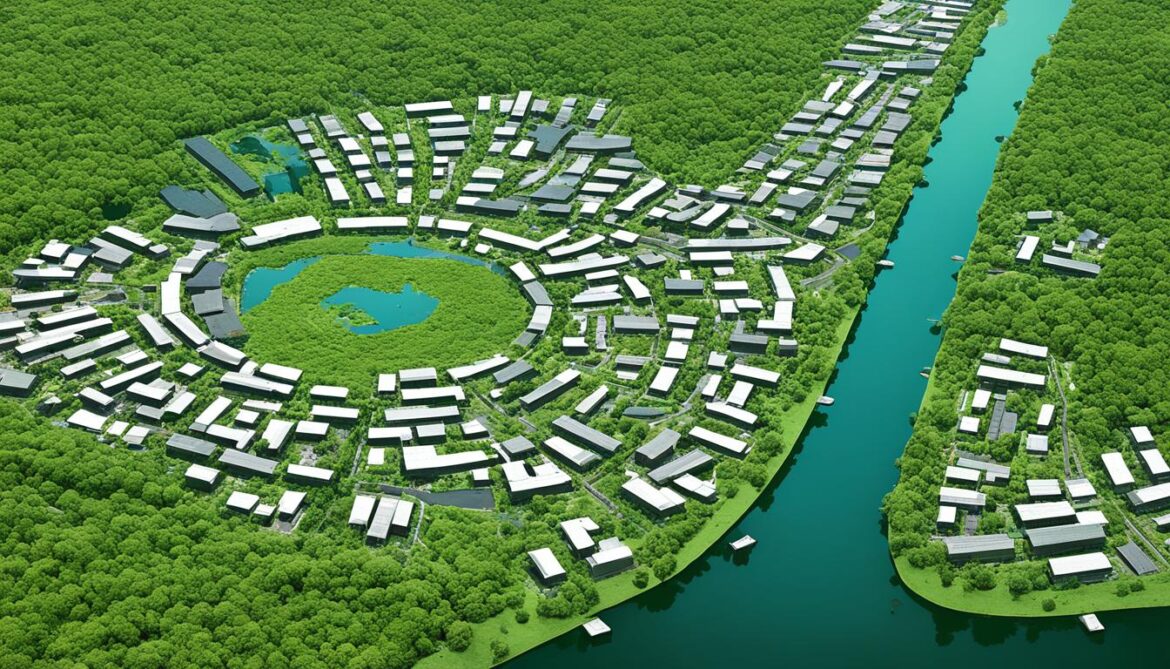
| Threats | Description |
|---|---|
| Deforestation | Clearing of forests for agriculture, infrastructure, and mining |
| Habitat Loss | Conversion of natural habitats into farmland and urban areas |
| Climate Change | Rising temperatures and extreme weather events |
| Illegal Mining | Unregulated mining activities causing pollution |
| Pollution | Industrial, agricultural, and plastic waste contamination |
The Importance of Conservation Efforts in Venezuela
Venezuela recognizes the vital importance of conservation efforts in protecting its diverse ecosystems and preserving its rich biodiversity. Through various initiatives, the country aims to ensure the long-term sustainability of its natural resources and promote a harmonious relationship between humans and the environment.
Establishment of Protected Areas
Venezuela has designated a significant number of protected areas to safeguard its unique habitats and species. These protected areas, such as national parks, wildlife sanctuaries, and biosphere reserves, serve as havens for wildlife, prevent habitat destruction, and provide opportunities for scientific study and ecotourism. By conserving these areas, Venezuela actively contributes to global biodiversity preservation efforts.
Promoting Sustainable Practices
The promotion of sustainable practices is another key aspect of Venezuela’s conservation efforts. The country encourages responsible land use, ensuring that development activities take into account the preservation of natural landscapes and the protection of vulnerable species. Sustainable practices are also promoted in sectors such as tourism, agriculture, and forestry, ensuring that economic activities coexist with environmental protection.
Investing in Research and Education
Venezuela recognizes the importance of research and education in achieving effective conservation outcomes. The country invests in scientific research to better understand its ecosystems, monitor biodiversity trends, and develop evidence-based conservation strategies. Educational programs are also in place to raise awareness among the general public, foster environmental stewardship, and cultivate a sense of responsibility towards Venezuela’s natural heritage.
“Conservation efforts are crucial to protect Venezuela’s ecosystems and unique species from threats such as illegal mining and climate change.”

Preserving Biodiversity for Future Generations
The preservation of biodiversity remains a top priority for Venezuela. By conserving its natural habitats and protecting species, the country aims to ensure a sustainable future for both its people and the environment. Recognizing the intrinsic value of its unique ecosystems, Venezuela’s conservation efforts serve as a model for other nations to follow. Through collective action and continued dedication, Venezuela strives to preserve its natural heritage for generations to come.
Sustainable Design in Venezuela’s Built Environment
Venezuela is at the forefront of sustainable design and eco-friendly architecture, prioritizing energy efficiency, sustainable materials, and innovative construction techniques. This commitment to sustainable practices is revolutionizing the built environment in Venezuela, leading to improved comfort, reduced energy consumption, and a lower environmental impact.
By adopting sustainable design principles, Venezuela is creating green buildings that not only enhance the well-being of occupants but also contribute to the preservation of the environment. Energy-efficient buildings reduce the reliance on traditional energy sources, resulting in a decreased carbon footprint and long-term cost savings.
Green buildings in Venezuela incorporate:
- Passive design strategies to maximize natural lighting and ventilation.
- Renewable energy systems such as solar panels and wind turbines to generate clean power.
- Efficient insulation and thermal materials to regulate internal temperatures.
- Water conservation techniques through the use of efficient fixtures and rainwater harvesting.
- Landscaping with native plants to reduce water consumption and promote biodiversity.
Venezuela’s construction industry is embracing sustainable materials, utilizing resources with minimal environmental impact. Recycled materials, locally sourced timber, and low-emission construction products are becoming increasingly common choices for sustainable building projects. These materials not only contribute to a greener construction industry but also create a healthier indoor environment for building occupants.
“Sustainable design in Venezuela showcases the country’s commitment to environmental stewardship and sets a precedent for the future of the architecture and construction industries.”
Moreover, sustainable design in Venezuela encourages collaboration, innovation, and economic growth. Architects, engineers, and builders are exploring new construction techniques that prioritize sustainability without compromising structural integrity or design aesthetics. This approach fosters a culture of continuous improvement and leads to a more sustainable and resilient built environment.
Innovation and Collaboration in Sustainable Design
Venezuela’s emphasis on sustainable design has created an ecosystem of innovation and collaboration within the architecture and construction industries. Professionals are actively exchanging knowledge and best practices, collectively working towards creating a sustainable future.
| Benefits of sustainable design in Venezuela’s built environment | Examples |
|---|---|
| Reduced energy consumption | Implementing energy-efficient systems, such as smart lighting and HVAC systems, significantly lowers overall energy usage in buildings. |
| Improved indoor air quality | Using low-VOC (volatile organic compound) materials improves indoor air quality, reducing health risks for occupants. |
| Cost savings | Investing in sustainable design features reduces operational costs, such as energy and water bills, in the long run. |
| Enhanced occupant comfort | Prioritizing natural lighting, adequate ventilation, and thermal comfort create pleasant and healthy living and working environments. |
| Positive social impact | Sustainable buildings contribute to the well-being of communities, promoting a healthier and more sustainable way of life. |
Through sustainable design in Venezuela’s built environment, the country is spearheading a movement towards a more sustainable future. By integrating energy efficiency, sustainable materials, and innovative construction techniques, Venezuela is not only reducing its environmental impact but also inspiring other nations to follow suit.
Image: Sustainable Design in Action
Take a look at this visually captivating image showcasing sustainable design in a Venezuelan green building:
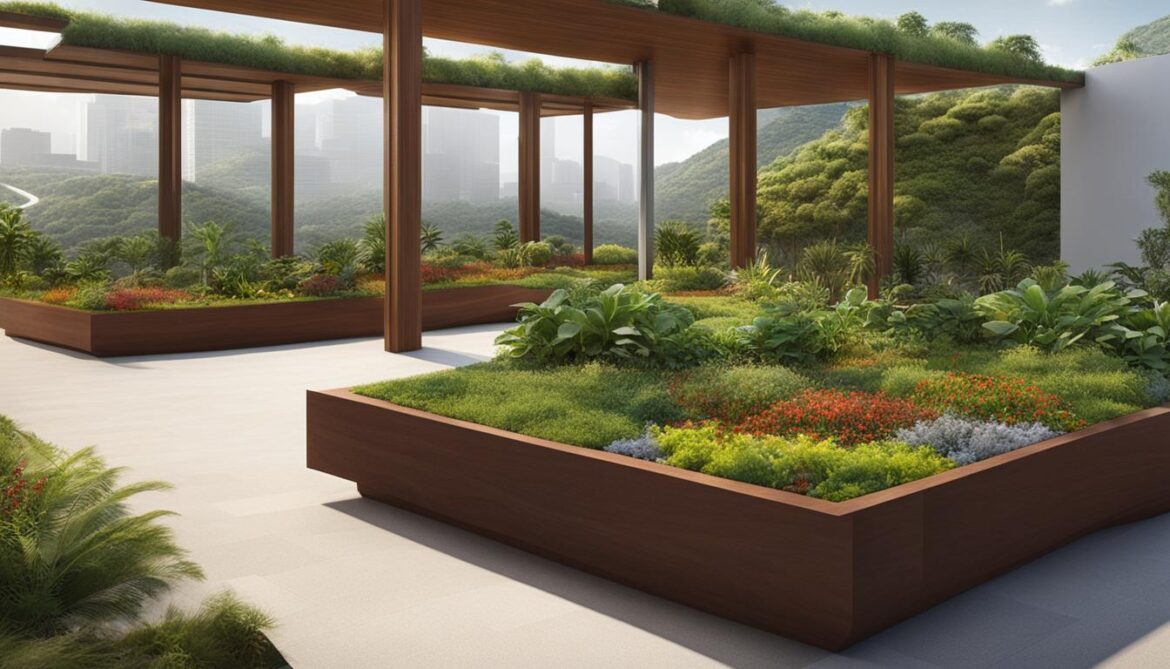
The image exemplifies the harmonious integration of sustainable materials, energy-efficient systems, and innovative construction techniques, emphasizing Venezuela’s commitment to a greener and more sustainable future.
Bioclimatic Principles and Passive Cooling Techniques
The integration of bioclimatic principles and passive cooling techniques in green buildings is a key aspect of promoting energy efficiency and enhancing thermal comfort in Venezuela. By employing various strategies, these buildings aim to reduce the impact of external factors and create a sustainable and comfortable indoor environment.
Solar Protection to Minimize Solar Gains
One of the primary strategies for enhancing energy efficiency is the implementation of solar protection measures in building design. By using shading devices, reflective surfaces, and proper orientation, buildings can minimize direct solar radiation. This reduces the amount of heat entering the building and helps maintain a cooler indoor temperature. By incorporating these bioclimatic principles, Venezuelan buildings can achieve significant energy savings and contribute to a more sustainable future.
Air Changes for Optimal Airflow and Temperature Regulation
Controlling air changes within buildings is another essential aspect of passive cooling techniques. By carefully designing ventilation systems and optimizing natural airflow, buildings can achieve efficient temperature regulation. Properly placed windows, vents, and exhaust systems allow for effective air circulation without the need for excessive mechanical cooling. This not only reduces energy consumption but also improves indoor air quality and occupant comfort.
Bioclimatic Landscaping for Shading and Natural Cooling
Bioclimatic landscaping plays a crucial role in passive cooling techniques in Venezuela. By strategically planting trees, shrubs, and other vegetation, buildings can benefit from natural shading and cooling effects. Trees and vegetation provide much-needed shade, reducing solar heat gain and creating a more pleasant microclimate. In addition to their cooling properties, green spaces also enhance aesthetics, improve air quality, and promote biodiversity.
“Integrating bioclimatic principles and passive cooling techniques in building design not only reduces energy consumption but also contributes to sustainability and greenhouse gas reductions.” – Architect Maria Fernandez
By adopting bioclimatic principles and passive cooling techniques, Venezuela demonstrates its commitment to sustainable design and environmental stewardship. These strategies not only improve energy efficiency and indoor comfort but also contribute to reducing greenhouse gas emissions. The integration of these techniques in green buildings showcases Venezuela’s dedication to a greener and more sustainable future.
| Benefits of Bioclimatic Principles and Passive Cooling Techniques | Examples |
|---|---|
| Enhanced energy efficiency | Reduced reliance on mechanical cooling |
| Improved thermal comfort | Maintained cooler indoor temperature |
| Lower environmental impact | Reduced greenhouse gas emissions |
| Promotion of biodiversity | Creation of green spaces for flora and fauna |
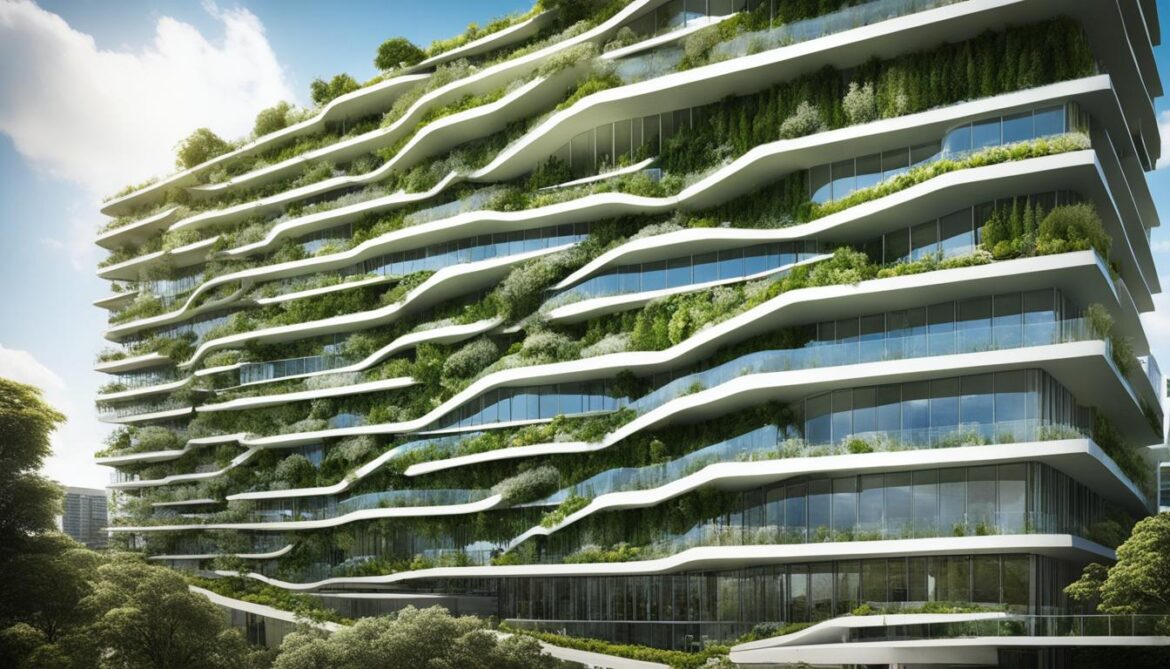
The Role of Renewable Energy Sources
In Venezuela’s pursuit of sustainable buildings, renewable energy sources play a crucial role. One such source is solar power, which is harnessed for both water heating and electricity generation through photovoltaic cells. By embracing renewable energy, Venezuela not only promotes a greener future but also reduces reliance on non-renewable resources, mitigating the impact on the environment.
When it comes to sustainable buildings, incorporating renewable energy sources is a critical step. Solar power, in particular, offers a promising solution for Venezuela’s energy needs. By harnessing the abundant sunlight, photovoltaic cells convert solar energy into usable electricity, making it a viable and eco-friendly alternative. These photovoltaic cells can be integrated into buildings, capturing sunlight and generating clean energy.
“Renewable energy sources, such as solar power, have the potential to transform our energy landscape and reduce the negative environmental footprint. By adopting sustainable practices like solar energy generation, Venezuela is creating a greener, more sustainable future for generations to come.” – Carolina Martinez, Sustainable Energy Advocate
One of the significant advantages of solar power is its versatility. It can be utilized for various purposes, such as water heating, reducing the reliance on conventional heating methods that often rely on fossil fuels. By using solar energy for water heating, buildings can significantly reduce their carbon footprint and contribute to energy efficiency efforts.
Additionally, integrating photovoltaic cells into buildings enables the generation of clean electricity. This allows buildings to meet a portion, if not all, of their energy demands through renewable sources. It not only reduces dependence on non-renewable resources but also lowers energy costs in the long run.
Sustainable Buildings and Energy Efficiency
Venezuela’s commitment to sustainable buildings extends beyond renewable energy sources. Energy-efficient systems and sustainable design principles are integral to constructing eco-friendly structures. By employing energy-efficient technologies like advanced insulation, smart meters, and efficient appliances, buildings minimize energy wastage and decrease their overall environmental impact.
Furthermore, sustainable buildings in Venezuela prioritize the use of sustainable materials, such as recycled or locally sourced materials. This reduces the carbon footprint associated with the construction process and ensures a more environmentally friendly approach to building projects.
By adopting sustainable design practices and embracing renewable energy sources, Venezuela aims to build a future that aligns with its commitment to environmental stewardship. The integration of solar power and other renewable energy sources in the country’s buildings not only promotes energy sustainability but also serves as a model for other nations aspiring to create a greener world.
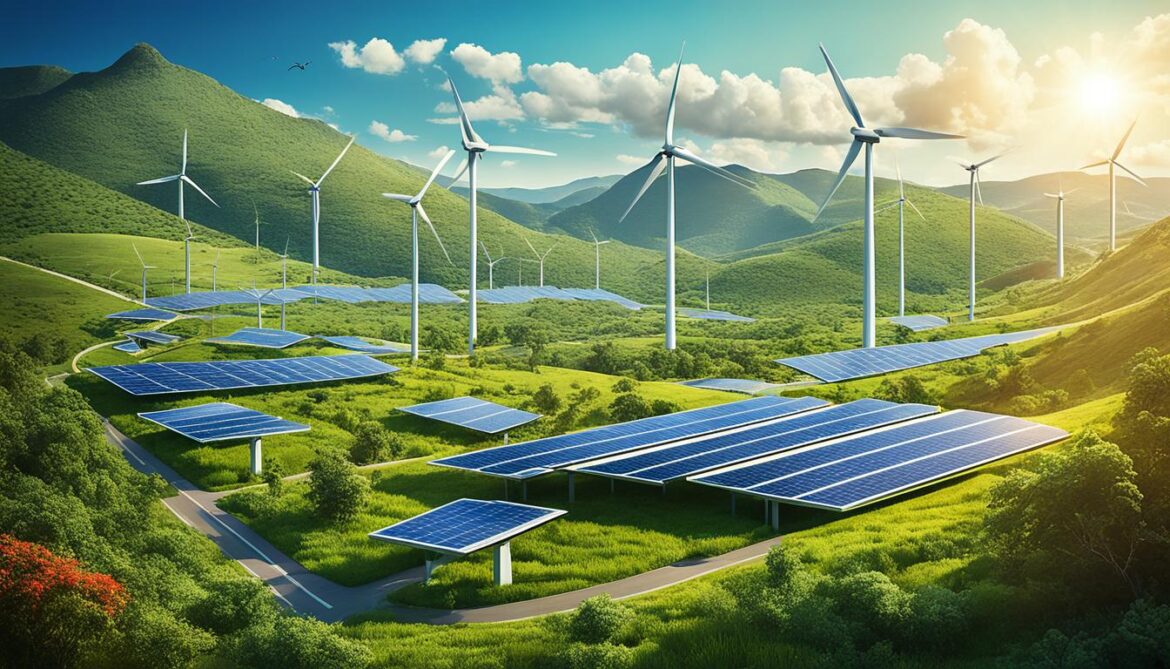
A rooftop photovoltaic system harnessing solar energy for renewable power generation.
Conclusion
Venezuela’s commitment to biodiversity conservation, sustainable design in the built environment, and the use of renewable energy sources positions the country for a more sustainable future. By prioritizing conservation efforts and promoting eco-friendly practices, Venezuela aims to safeguard its natural heritage, minimize environmental impact, and create a better future for its people and the planet.
With its diverse plant life and wildlife, Venezuela is a biodiversity hotspot that requires careful stewardship. Through initiatives like protected areas and sustainable practices, the country strives to preserve its natural habitats and unique species. Additionally, Venezuela’s focus on sustainable design in its built environment, including green buildings and energy-efficient systems, reflects its commitment to reducing carbon footprint and promoting sustainable development.
By embracing a sustainable future, Venezuela not only protects its natural resources but also fosters a healthier and more prosperous society. The integration of renewable energy sources like solar power further contributes to the country’s environmental stewardship. With these concerted efforts, Venezuela paves the way towards a greener and more sustainable future for generations to come.



